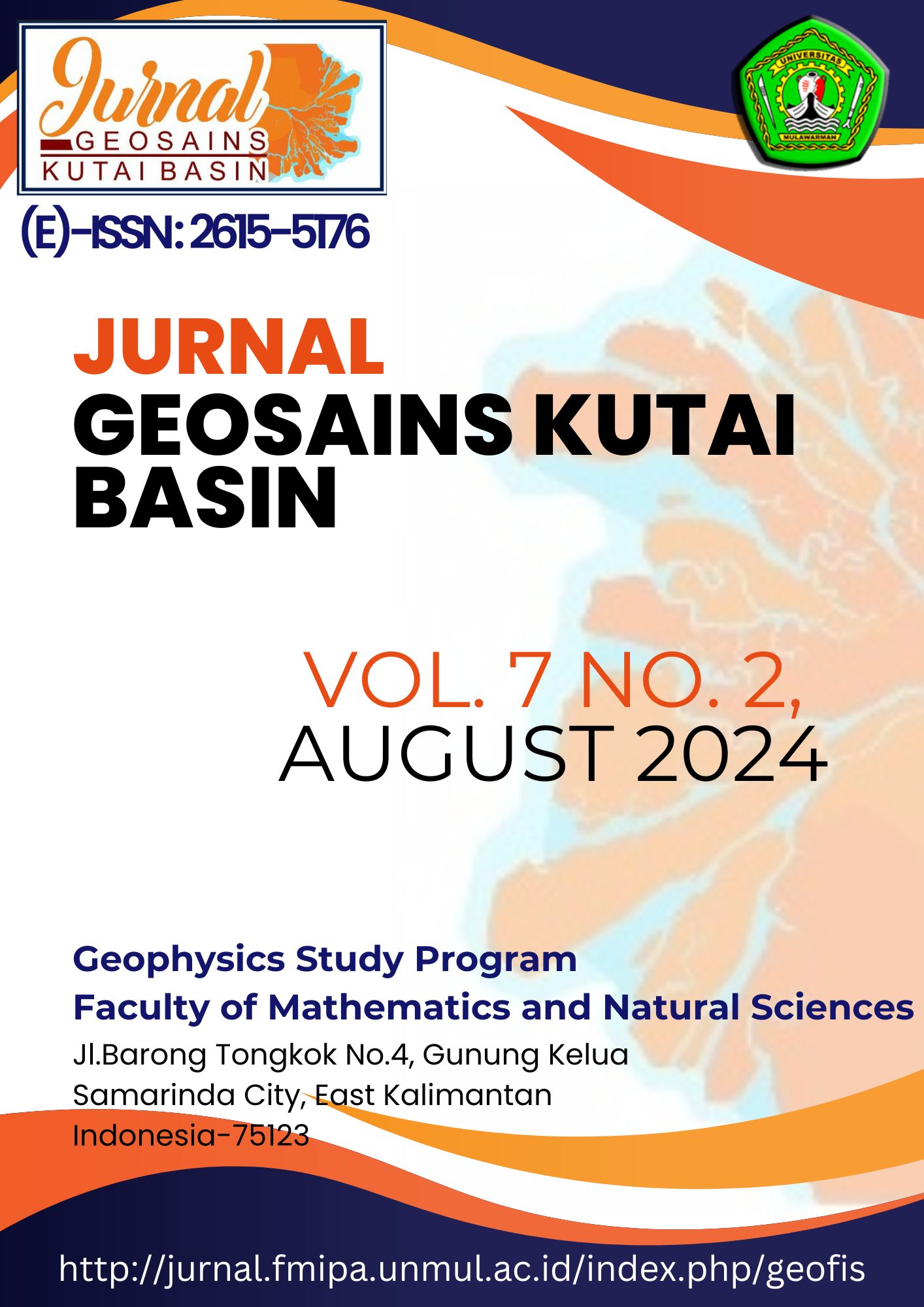Identifikasi Potensi Batuan Induk pada Sumur Parang G-1 Berdasarkan Analisis Geokimia dan Analisis Stratigrafi di Cekungan Biliton
DOI:
https://doi.org/10.30872/geofisunmul.v7i2.1329Keywords:
Hydrocarbons, Stratigraphy, Source Rock, Biliton Basin, Exploration, South SumatraAbstract
Hydrocarbons, especially oil and natural gas, are important energy sources for modern civilization. Rising global demand is driving intensive and innovative hydrocarbon exploration. This research was conducted in the Belitung Basin, South Sumatra, to determine the potential of the parent rock of the Palang G-1 well and determine the thickness of the formation based on stratigraphic analysis of the Belitung Basin. The geochemically described data is secondary data that has been processed and adopted by the Geological Survey Center of the Ministry of Energy and Mineral Resources. The research results indicate that the source rock with the highest potential for hydrocarbon production is found in the Talang Akar Formation, based on several parameters such as kerogen type, TOC content, and maturity level. However, the hydrocarbons in this well are not yet fully mature and require further investigation. Stratigraphic analysis revealed that the Non-Marine Clays Formation has a thickness of 2200 ft. The Talang Akar transition layer is defined as the transition contact with the Air Benakat formation. Based on drilling data, the Talang Akar Formation has a thickness of 1300 ft. The massive sand Talang Akar Formation has a thickness of 1000 ft. The Non-Marine Clay Layer has a thickness of 1800 ft.


